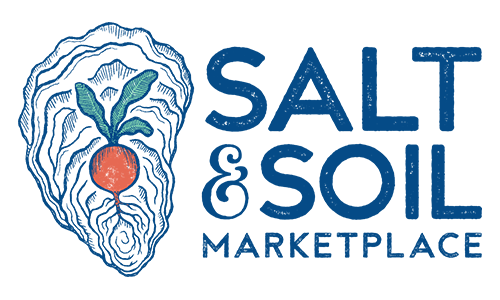Why local foodS?
Southeast Alaska is rich with natural resources, cultural heritage, and community innovation. We hunt, fish, forage and harvest wild foods from the lands and waters that surround us. With dedicated hard work and innovation, Southeast Alaskans also cultivate personal gardens, build greenhouses, and grow beautiful vegetables on small-scale high intensity farms.
In Alaska, 95% of the $2 billion of food Alaskans purchase is imported — meaning $1.9 billion leaves the state each year as Alaskans eat. This imported food is shipped through long supply chains from the lower 48 via barge, air, and truck for communities connected to the road system. By depending on these distant supply chains, the food security of our communities is vulnerable to disruptions.
The Covid-19 pandemic highlights how little control we have over global markets and supply chains. The good news is that collectively, we have the power to reshape the food system in our communities and region by growing, harvesting, and shopping local.
Reference: "Building Food Security in Alaska" by Ken Meter and Megan Phillips Goldenberg (https://www.crcworks.org/akfood.pdf)
What is “Local Food”?
While ‘local food’ can refer to a geographic region such as a state or country, we are defining local food for Southeast Alaska as any food that is gathered, grown, hunted, or fished in Southeast Alaska. We want to focus on where we live and deepen our relationship with the natural ecosystems, cultural heritage, and contemporary innovations of our communities.
A different kind of local foodS challenge
While many local food challenges focus on eating local products or buying local foods, this challenge is unique to Southeast Alaska. It challenges you to not only shop local and garden, but also to harvest the abundance provided by our lands and waters, innovate to reduce waste, and share your knowledge and ideas with others. Alaska is one of the few places in the world where foods from the land and sea can be harvested from regenerative natural systems. Stewardship of these resources is a necessary part of participating in the food system.
what is a food system?
Often the food supply chain is depicted as a one way street and is non-regenerative. It starts at the producer, who is the farmer, rancher, or fisher. The processor then transforms it and packages it. The distributor then transports the food to the retailer, which sells the food product to the consumer where it ends up eaten or thrown away as food waste.
We want our food system in Southeast Alaska to resemble a two way street; a regenerative cycle that renews itself. The producer is someone who hunts, fishes, gathers, and grows food. These foods may be preserved and stored for the short or long term. They are shared from people to people, or through commercial means like a farmer’s market, grocery store, restaurant, or school. The consumer then eats the food. Anything that is not eaten is recovered or composted for the purposes of replenishing soil resources so that food can be grown once again and the cycle begins.
We want our food system in Southeast Alaska to resemble a two way street; a regenerative cycle that renews itself. The producer is someone who hunts, fishes, gathers, and grows food. These foods may be preserved and stored for the short or long term. They are shared from people to people, or through commercial means like a farmer’s market, grocery store, restaurant, or school. The consumer then eats the food. Anything that is not eaten is recovered or composted for the purposes of replenishing soil resources so that food can be grown once again and the cycle begins.


